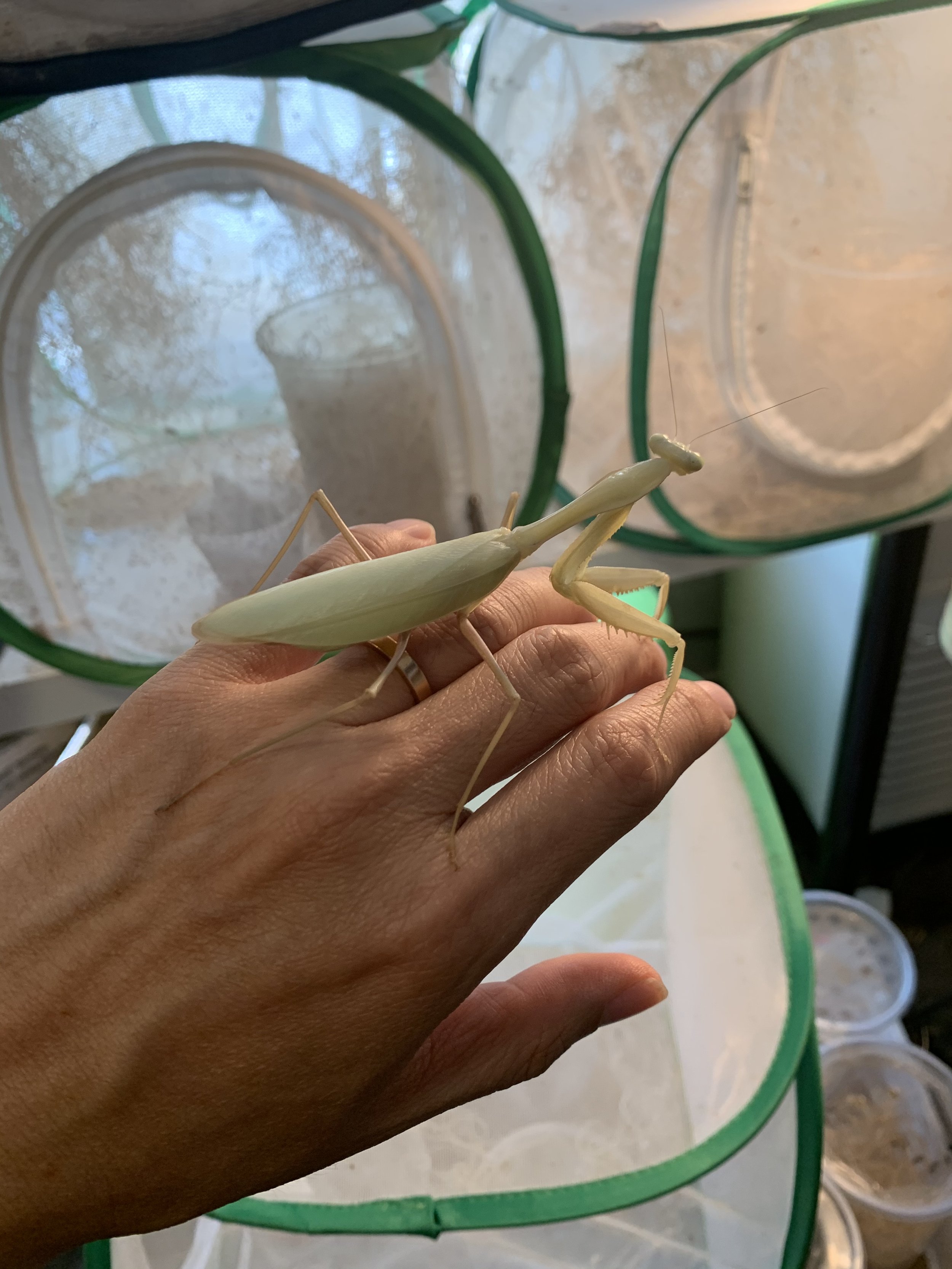 Image 1 of 1
Image 1 of 1


Giant Asian Mantis (Hierodula membranacea)
Yet another BEST SELLER! Giant Asian mantises are a huge species! The giant Asian mantis (Hierodula membranacea) is a large and robust species of praying mantis native to Southeast Asia. Known for its impressive size—females can grow up to 4 inches or more—this species is typically green or brown, allowing it to blend into foliage in its natural habitat. It thrives in warm, humid environments with temperatures ranging from 75–80°F (24–27°C) and humidity around 60–70%. In captivity, they require a spacious, well-ventilated enclosure with vertical climbing surfaces and foliage for hiding. As active hunters with strong appetites, giant Asian mantises feed on a variety of live insects such as moths, roaches, and flies. They are generally hardy and relatively easy to care for, making them a popular choice for both beginner and experienced keepers. However, due to their aggressive and territorial nature, they should always be housed individually to prevent cannibalism. As they molt into adults they grow giant wings. This species is very easy to care for which makes this a great first or beginner species of praying mantis.
Yet another BEST SELLER! Giant Asian mantises are a huge species! The giant Asian mantis (Hierodula membranacea) is a large and robust species of praying mantis native to Southeast Asia. Known for its impressive size—females can grow up to 4 inches or more—this species is typically green or brown, allowing it to blend into foliage in its natural habitat. It thrives in warm, humid environments with temperatures ranging from 75–80°F (24–27°C) and humidity around 60–70%. In captivity, they require a spacious, well-ventilated enclosure with vertical climbing surfaces and foliage for hiding. As active hunters with strong appetites, giant Asian mantises feed on a variety of live insects such as moths, roaches, and flies. They are generally hardy and relatively easy to care for, making them a popular choice for both beginner and experienced keepers. However, due to their aggressive and territorial nature, they should always be housed individually to prevent cannibalism. As they molt into adults they grow giant wings. This species is very easy to care for which makes this a great first or beginner species of praying mantis.

